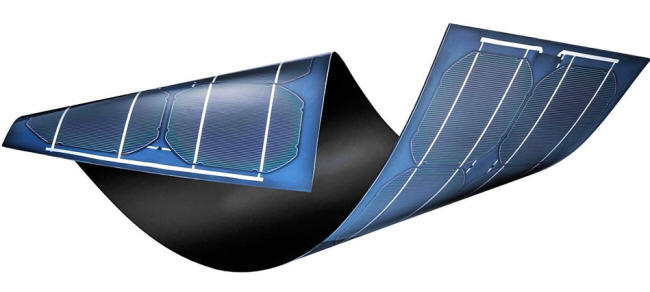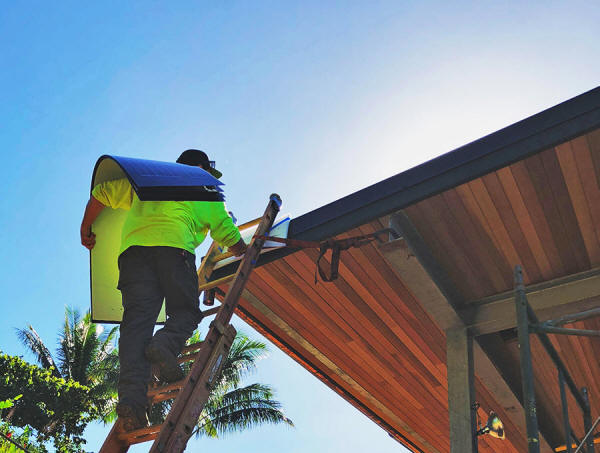|
by Amanda Sorell
from
MotherEarthNews Website can go on metal-roofed structures, such as large barns, that wouldn't be able to support the weight of standard glass and silicon panels. Photo by Rodale Institute.
Where conventional glass and silicon solar panels cannot go, a new, lightweight innovation from solar manufacturer 'Sunflare' may be the perfect solution...
According to the U.S.
Department of Energy, the average cost of solar PV panels has
dropped more than 60 percent since 2010, and the cost of a solar
electric system has dropped by about 50 percent.
However, even if a
property owner is prepared to go solar, not every roof is spacious
enough, strong enough, or shaped in the right way to accommodate a
large solar installation.
Sunflare's flat, waterproof panels are made without frames, racks, or glass; can be walked on; and can be made to fit any shape.
Producing these panels requires less energy than producing glass and silicon panels, and, at 1.7 millimeters thick, they're more flexible; you can bend and curve each panel's backing to suit the roof beneath it.
Sunflare weighs 86 percent less than silicon, and, unlike commercial roofing installations, requires no roofing punctures. These features mean the panels can be attached to any structure without adding too much weight or compromising its integrity.
Plus, the company is committed to environmental stewardship:
For the past decade, Sunflare has worked to hone its "Capture4" technology, which ensures a panel's cell-by-cell precision for powering up:
The panels are currently slightly less efficient than traditional solar panels, but they can soak up even low levels of light - at dusk and dawn, and under cloud cover - and can generate power during the hottest part of the day, whereas silicon generates less power during peak heat.
Sunflare panels can also be used to generate power from previously unused places, such as the roof of a carport or shed.
And while the panels are
more expensive than silicon solar panels, they'll involve lower
installation and hardware costs, putting them on more equal
footing with standard panels.
The residential solar shingles, which are slotted for release in 2020, will come with a 25-year warranty.
The company hopes its panels can join the other solar products on the market, not supplant them.
|




